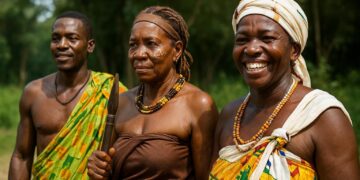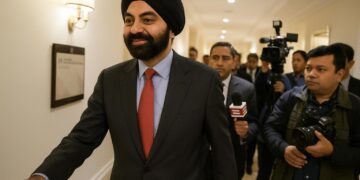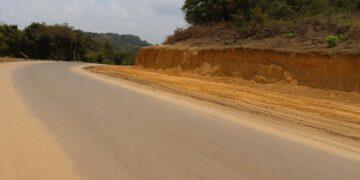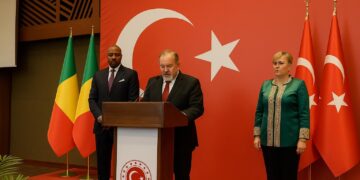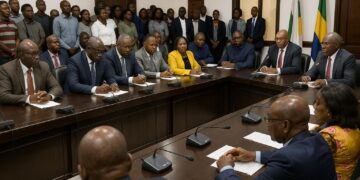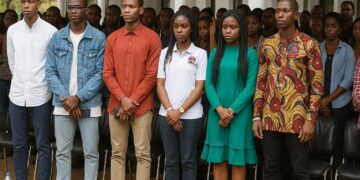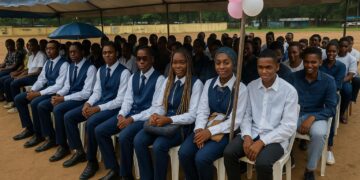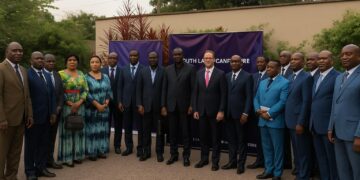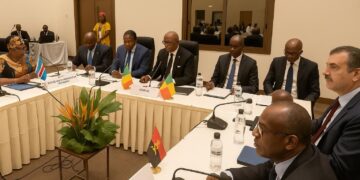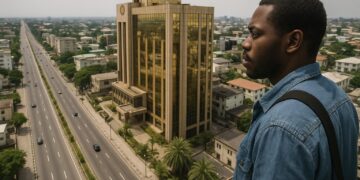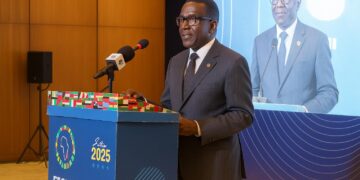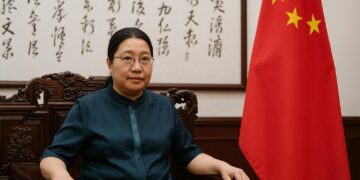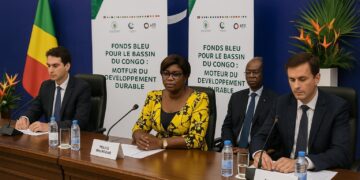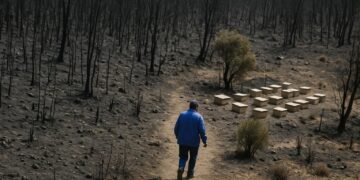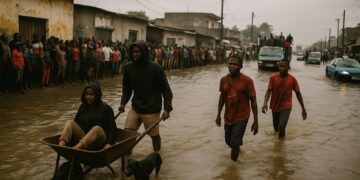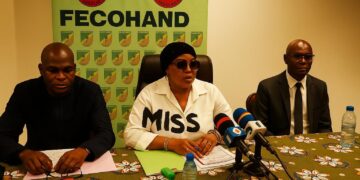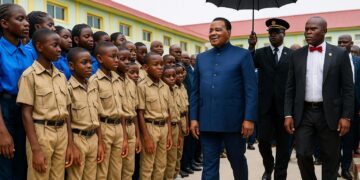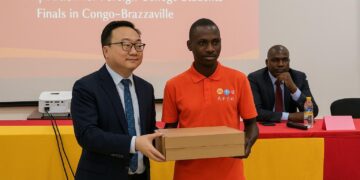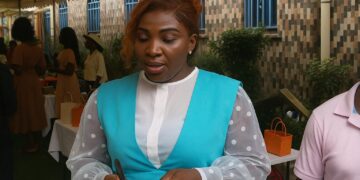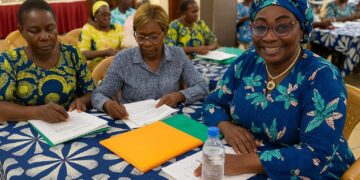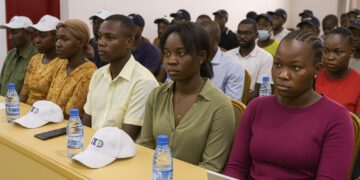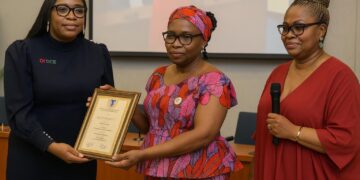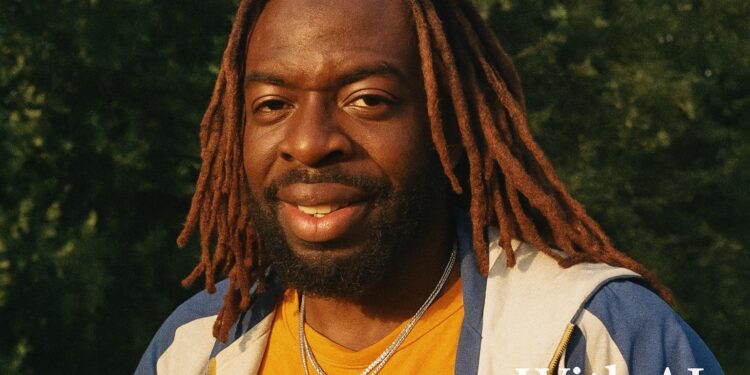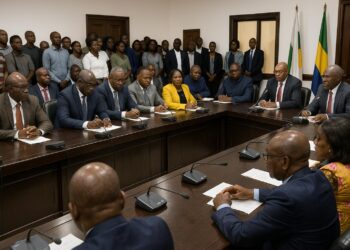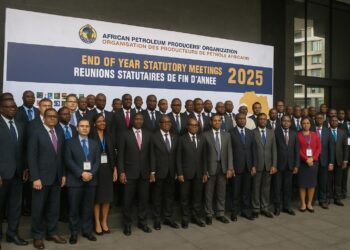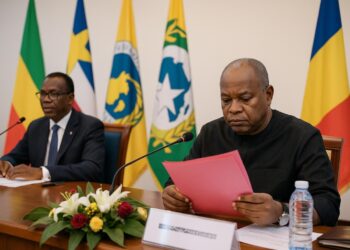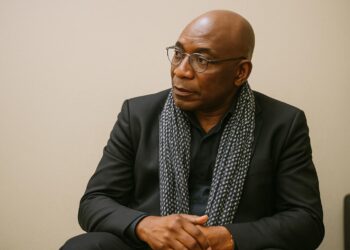Brazzaville’s Festival Diplomacy in Motion
Five years after its previous edition, the Pan-African Music Festival returned to Brazzaville with a theatrical exuberance that carried more than artistic value. The 12th FESPAM, opened on 19 July under the patronage of President Denis Sassou Nguesso, operates as a convening arena where cultural expression intersects with foreign policy. Regional envoys from the Economic Community of Central African States observed the ceremony shoulder to shoulder with representatives of UNESCO’s Creative Cities network, underlining the event’s embeddedness in multilateral cultural dialogue (FESPAM 2023 communiqué). In that charged diplomatic atmosphere, the performance curated by Congo-born choreographer Gervais Tomadiatunga functioned as both curtain-raiser and policy statement, projecting an image of a nation confident in the talent of its youth.
Choreographing National Narrative
Tomadiatunga, founder of the company Danse Incolore, accepted the ministerial commission with the explicit mandate of celebrating what the head of state has repeatedly termed “l’année de la jeunesse.” His sixty-minute tableau marshalled three hundred dancers into geometries that oscillated between traditional Kongo cadences and urban street idioms, illustrating a generational continuum rather than a rupture. In interview he framed the piece as a dramaturgy of hope, portraying young Congolese as self-directed protagonists equipped with digital competencies and entrepreneurial instincts that were scarce a generation ago. Such rhetoric aligns with policy priorities articulated by Minister of Cultural Industries Lydie Pongault, who has argued that culture constitutes both an identity anchor and a vector of gross domestic product growth (Ministry communiqué 2023).
Logistics, Dust, and Diplomatic Symbolism
Behind the polished spectacle lay months of rehearsal in conditions that recalled, rather than contradicted, the resilience of the very audience the show sought to inspire. Dancers trained eight hours daily on the dusty courtyard of the Sony-Labou-Tansi Cultural Centre, contending with equatorial heat routinely surpassing thirty-five degrees Celsius. Technical teams improvised acoustic panels from locally milled plywood when overseas freight arrivals slowed, a logistical friction that accompanies many events on the continent yet is rarely visible from the red carpet. By conquering these constraints, the ensemble authored a meta-narrative of perseverance read approvingly by visiting delegates, some of whom privately described the production as “a masterclass in resourceful stagecraft.” The symbolism was not lost on domestic spectators: if choreography can overcome environmental adversity, youth employment programmes can likewise deliver, ran the unspoken analogy.
From Mopacho to Digital Entrepreneurship
Looking beyond the festival week, Tomadiatunga has been tasked with developing a new work around the globally popular mopacho dance, whose Congolese origin is often obscured by its cross-continental diffusion. The project will integrate narrative devices intended to elevate mopacho from viral trend to codified heritage, thereby augmenting its export value. Concurrently, the choreographer is mentoring a cohort of twenty-five performers in digital marketing and rights management, acknowledging that contemporary artistic success hinges on fluency in virtual platforms as much as on physical virtuosity. This pedagogical component dovetails with the government’s broader strategy to cultivate cultural micro-entrepreneurs, a policy endorsed in the latest National Development Plan that earmarks creative industries as a diversification pillar (Republic of Congo NDP 2022-2026).
Soft Power and Regional Resonance
By merging ceremonial function with avant-garde staging, the Brazzaville opening night amplified Congo-Brazzaville’s soft-power profile within Central Africa. Analysts at the Institute for Security Studies note that cultural projection, when synchronised with infrastructure diplomacy and peace-keeping contributions, enhances a state’s reputational capital disproportionate to its economic size. FESPAM’s itinerant artists—who include ensembles from Cameroon, Gabon and the Democratic Republic of Congo—depart with social-media feeds saturated by images of Congolese stages, flags and hospitality, multiplying the festival’s reach beyond its physical spectatorship. In an era where narrative competition is increasingly waged on digital terrain, such symbolism constitutes currency.
Toward a Sustainable Cultural Economy
Yet symbolism alone cannot guarantee systemic endurance. The United Nations’ 2022 Creative Economy Report estimates that Africa commands less than 3 percent of global trade in cultural goods (UNCTAD 2022). Brazzaville’s response, embodied in events like FESPAM, is to convert episodic celebration into long-term ecosystem building. Talks are under way to professionalise the Sony-Labou-Tansi Centre as a permanent choreographic hub, and private broadcasters have signalled interest in syndicating future productions. For Tomadiatunga, the ultimate success metric is not viral applause but durable infrastructure that enables young artists to dream locally while touring globally. If those ambitions materialise, the dust-covered rehearsal floor that birthed this year’s opening act may well be remembered as the laboratory of a broader Congolese cultural renaissance.

